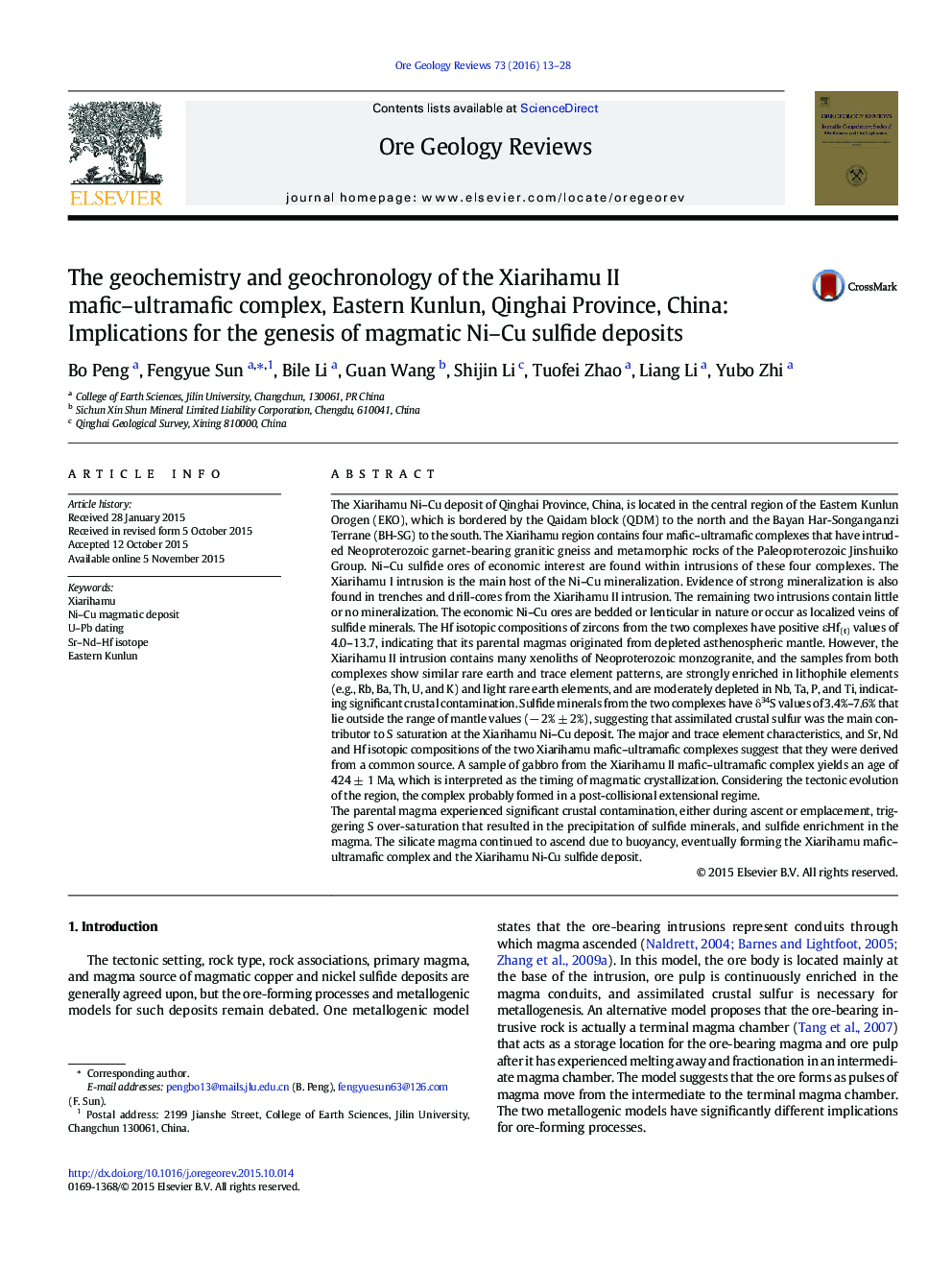| کد مقاله | کد نشریه | سال انتشار | مقاله انگلیسی | نسخه تمام متن |
|---|---|---|---|---|
| 6435866 | 1351862 | 2016 | 16 صفحه PDF | دانلود رایگان |

- Xiarihamu is the first large Cu-Ni magmatic deposit discovered in Eastern Kunlun, Qinghai Province, China.
- Xiarihamu II mafic-ultramafic complex has a close temporal relationship with the mineralization.
- The complex probably formed in a post-collisional, extensional regime.
- Earlier enrichment of the lithospheric mantle aided the generation of mafic magma, eventually forming the complex and deposit.
The Xiarihamu Ni-Cu deposit of Qinghai Province, China, is located in the central region of the Eastern Kunlun Orogen (EKO), which is bordered by the Qaidam block (QDM) to the north and the Bayan Har-Songanganzi Terrane (BH-SG) to the south. The Xiarihamu region contains four mafic-ultramafic complexes that have intruded Neoproterozoic garnet-bearing granitic gneiss and metamorphic rocks of the Paleoproterozoic Jinshuiko Group. Ni-Cu sulfide ores of economic interest are found within intrusions of these four complexes. The Xiarihamu I intrusion is the main host of the Ni-Cu mineralization. Evidence of strong mineralization is also found in trenches and drill-cores from the Xiarihamu II intrusion. The remaining two intrusions contain little or no mineralization. The economic Ni-Cu ores are bedded or lenticular in nature or occur as localized veins of sulfide minerals. The Hf isotopic compositions of zircons from the two complexes have positive εHf(t) values of 4.0-13.7, indicating that its parental magmas originated from depleted asthenospheric mantle. However, the Xiarihamu II intrusion contains many xenoliths of Neoproterozoic monzogranite, and the samples from both complexes show similar rare earth and trace element patterns, are strongly enriched in lithophile elements (e.g., Rb, Ba, Th, U, and K) and light rare earth elements, and are moderately depleted in Nb, Ta, P, and Ti, indicating significant crustal contamination. Sulfide minerals from the two complexes have δ34S values of 3.4%-7.6% that lie outside the range of mantle values (â 2% ± 2%), suggesting that assimilated crustal sulfur was the main contributor to S saturation at the Xiarihamu Ni-Cu deposit. The major and trace element characteristics, and Sr, Nd and Hf isotopic compositions of the two Xiarihamu mafic-ultramafic complexes suggest that they were derived from a common source. A sample of gabbro from the Xiarihamu II mafic-ultramafic complex yields an age of 424 ± 1 Ma, which is interpreted as the timing of magmatic crystallization. Considering the tectonic evolution of the region, the complex probably formed in a post-collisional extensional regime.The parental magma experienced significant crustal contamination, either during ascent or emplacement, triggering S over-saturation that resulted in the precipitation of sulfide minerals, and sulfide enrichment in the magma. The silicate magma continued to ascend due to buoyancy, eventually forming the Xiarihamu mafic-ultramafic complex and the Xiarihamu Ni-Cu sulfide deposit.
Journal: Ore Geology Reviews - Volume 73, Part 1, March 2016, Pages 13-28